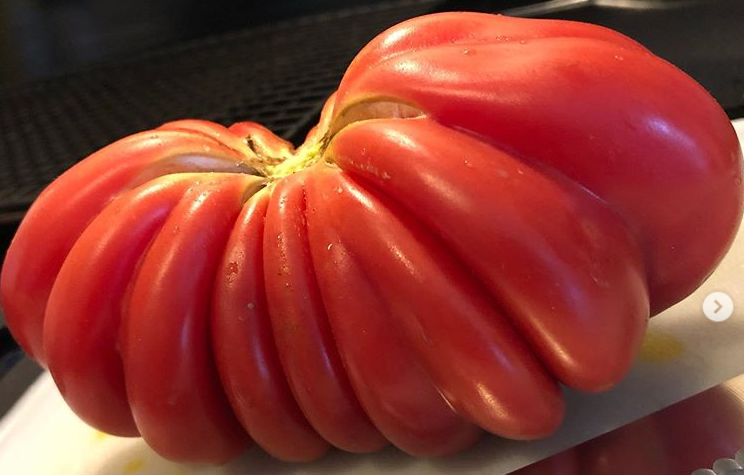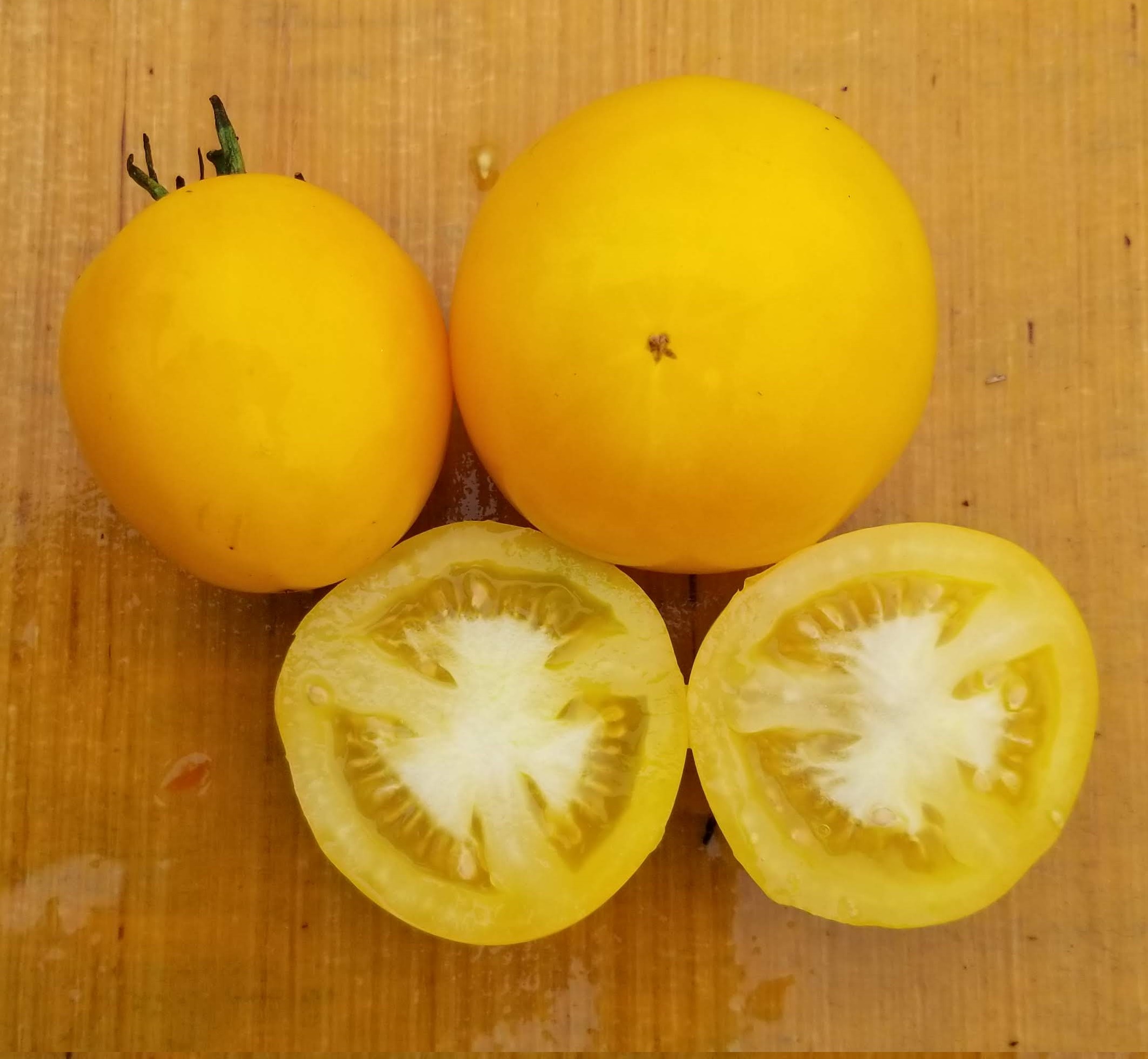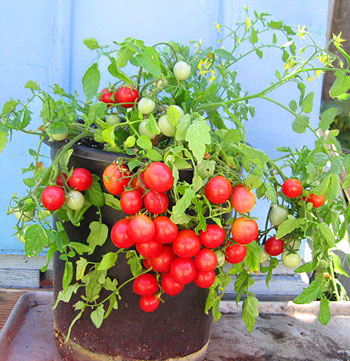
In the previous post, we explored the many colours of the tomato fruit but it is not only the fruit colour that is variable. The fruit shape ranges from small and round to long and tapered to large and scalloped. Typically smaller fruits are sweeter and more piercing in flavour but taste is also influenced by colour, acid-sugar balance, and the density of the flesh. Most people seem to enjoy a balance of acid and sweet but for those that need low acid, there’s Taxi.

Growth Habit
Perhaps one of the characteristics that growers focus on is how the plant grows. Indeterminate varieties like Lemon Drop and Cuostralee keep growing taller and wider throughout the season. They also fruit more repeated flushes. You can try to grow them in cages though these types typically spill out and over. They are also commonly trained by pruning in various ways such as a Florida weave. Determinate varieties like Legend and Green Sausage on the other hand, terminate at a particular height producing usually one big flush of tomatoes. There are also semi-determinate types such as Red Marmande. A dwarf tomato has much shorter final height and may or may not be determinate. Mini Rose Cherry is a determinate type and Venus is truly tiny at 6-8 inches. These types are good for containers. Some are even grown indoors during the winter under lights such as Whippersnapper. Chocolate Lightning, and Blanche du Quebec are examples of dwarf, early tomatoes.

Leaf shape
Leaf shape can also vary from what we consider regular leaf to ones with less clear ‘fingers’ we call potato leaf. Brandywines are often potato leafed as is Southern Night. There’s also ones that are more deeply cut and/or wispy like Oxheart or Opalka. Speaking of which, some tomatoes (fruit and/or foliage) are fuzzy like Apricot and Vilmaron Peche. It’s not just the fruit that are different hues. From my experience, foliage and stems can be lighter or darker with some carrying the genetics to higher anthocyanin production (seen in the fruit as blue-black shoulders) having some level of purple.
Differences go deeper than appearance. Some are better adapted to hot and dry like Gezahnte whereas Bonny Best is said to do well in cooler conditions.
Use
Tomatoes have been selected for different uses including those that are best eaten raw in salads or popped straight into the mouth like Yellow Pear or Vernissage Pink, those that are good dried like Orange Banana Tomato or Red Fig, best for sauce and/or canning like Napoli or Scatalone great for slicing like German Pink and Aussie, or even those that keep well into the winter like Long Keeper Tomato.
Even describing all these tomato differences, I feel like we’ve just scratched the surface. There’s a tomato that grows without branching and looks like a stick. There’s one with variegated foliage. Another with fuzzy grey foliage. And I’m sure I’m missing some fascinating forms!
To read more about tomato colour, go to Why (Not) so Red Tomato